Customer Onboarding: Worldwide Examples and Best Practices
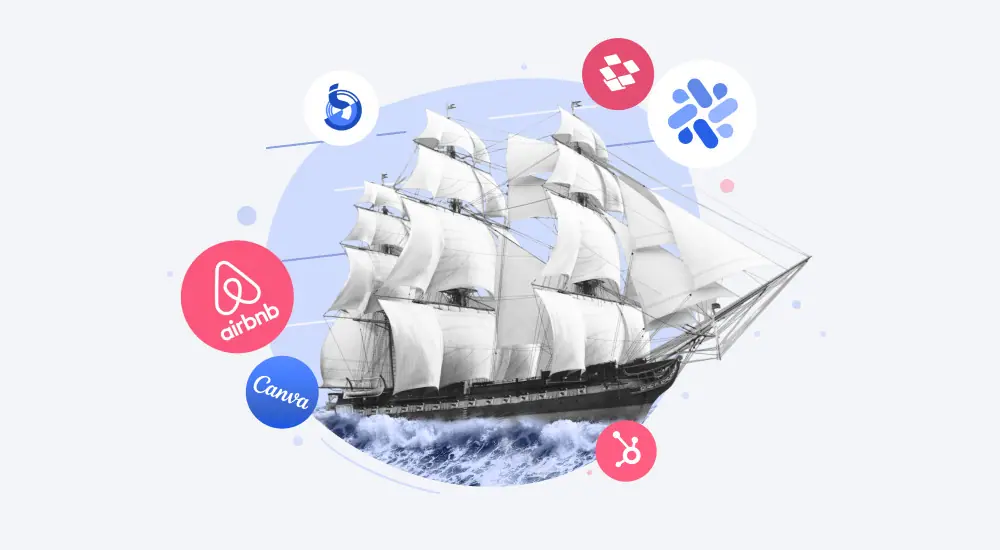
When it comes to gaining and retaining customers, a successful customer onboarding process plays a key role. Client onboarding, also known as customer onboarding and customer education, is the process of guiding new clients in the effective use of a product or service. By providing a smooth and informative onboarding experience, businesses can establish strong customer relationships, build trust, and foster long-term loyalty.
In this article, we’ll explore:
- What customer onboarding is
- Why it’s important
- Key elements for customer onboarding success, or a client onboarding checklist
- How to create client onboarding training
- Worldwide examples
- Best practices
What Is Customer Onboarding?
Customer onboarding is the process of getting new clients acquainted with your product or service. It encompasses a range of activities and interactions designed to welcome, educate, and empower clients. The ultimate goal of customer onboarding is to ensure that clients have a positive experience with the product from the very beginning, which can lead to long-term loyalty and advocacy.
Why Is Customer Onboarding Important?
Customer onboarding is crucial for businesses that aim to gain and keep customers. It sets the stage for the entire customer relationship and makes a positive first impression. Without proper onboarding training, businesses risk facing significant challenges that can negatively impact their success.
Imagine a software provider that neglects customer onboarding. When new clients sign up for their software, they are left to navigate the platform on their own, without any guidance or support. As a result, customers struggle to understand the software’s functionalities and how to maximize its value for their specific needs.
Without proper onboarding, customers become frustrated and overwhelmed, leading to increased support requests and a higher churn rate. Many clients abandon the software early on because they can’t grasp its full potential or integrate it effectively into their workflows. The software provider experiences a reduction in client satisfaction and retention, ultimately affecting their bottom line.
Good customer onboarding can help you avoid such scenarios.
5 Benefits of Effective Customer Onboarding
A well-executed client onboarding process yields numerous benefits, including:
1. Improved customer retention rates: Effective onboarding increases the likelihood that clients will stay with your business, thereby reducing churn and improving long-term profitability.
2. Increased customer loyalty and satisfaction: By providing smooth and engaging training, customers are more likely to feel satisfied and become loyal to your brand.
3. A better understanding of customer needs and preferences: Training allows you to gather insights into customer preferences, pain points, and expectations, thus enabling you to tailor your offerings accordingly.
4. Increased revenue through upselling and cross-selling: Successful onboarding training presents opportunities to showcase additional products or services, increasing the likelihood of upselling and cross-selling.
5. Enhanced brand reputation and word-of-mouth recommendations: Satisfied clients who have a positive onboarding experience are more likely to recommend your business to others, thereby expanding your customer base.
Key Elements of a Successful Client Onboarding Process
To create a successful client onboarding process, businesses should focus on the following elements:
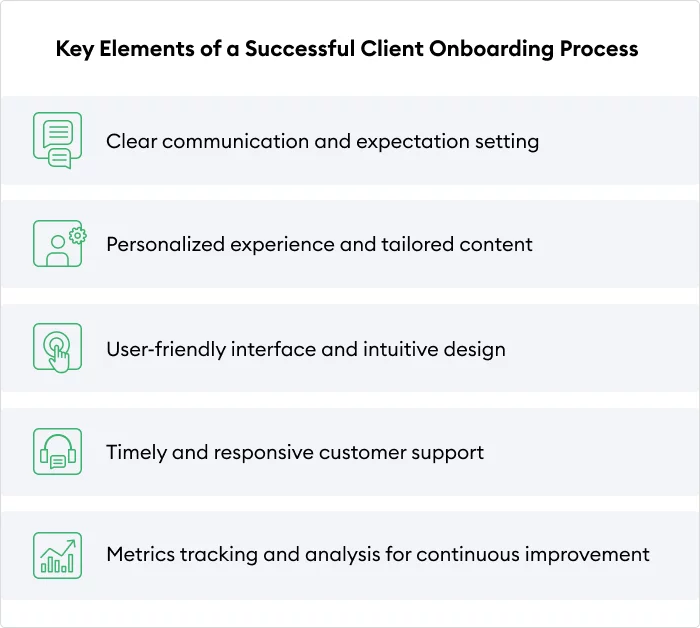
You can also use this list of elements as a client onboarding checklist to make sure that your training is in order. See what each element entails:
- Clear communication and expectation setting: Communicate what clients can expect from your product or service with transparency. Outline the steps that await them clearly and manage their expectations regarding timelines, support channels, and available resources.
- Personalized experience and tailored content: Provide customized training experiences that cater to each customer’s specific needs. Tailor the content you provide based on their industry, use case, or preferences. Personalization enhances engagement and demonstrates your commitment to their success.
- User-friendly interface and intuitive design: Ensure that your product has a user-friendly interface with intuitive design principles. Simplify the onboarding period by incorporating guided tours, tooltips, and contextual help to assist clients in navigating and using your offering effectively.
- Timely and responsive customer support: Offer timely and responsive customer support throughout the onboarding process. Be available to address any questions, concerns, or issues that clients may encounter. Prompt and helpful assistance builds trust and confidence.
- Metrics tracking and analysis for continuous improvement: Implement tracking mechanisms to measure key onboarding metrics, such as time to first value, activation rates, and user engagement. Analyze these metrics to identify bottlenecks and areas for improvement in your client onboarding process.
As mentioned above, you can use this list of elements as a client onboarding checklist. You can incorporate it into your preparation work to make sure you don’t miss anything.
How to Create a Customer Onboarding Process
To develop an effective customer onboarding process, consider the following steps:
Step 1: Send a welcome email
Start with a personalized onboarding email. Introduce yourself, the company, and express gratitude for choosing your product. You may outline the next steps, provide training content or useful info and links to help clients get started.
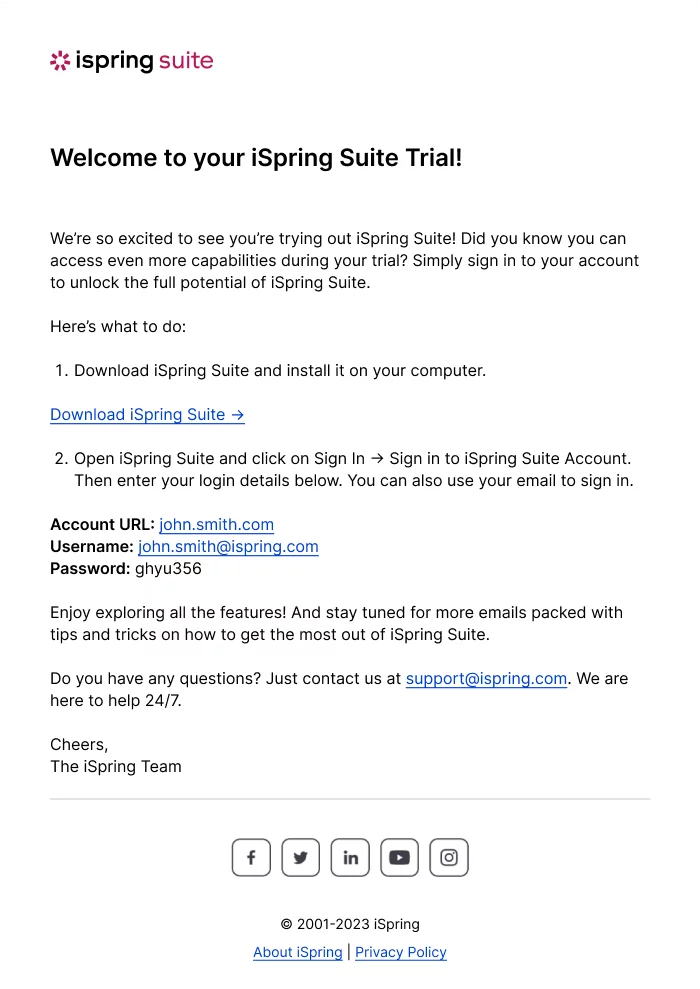
Step 2: Set expectations
Clearly define what clients can expect from your product or service, including its functionalities, limitations, and any necessary prerequisites. Manage expectations regarding support response times and available channels.
Step 3: Provide training
Offer comprehensive training content, such as tutorials, videos, webinars, and a knowledge base. The contents should guide clients through the setup process, highlight the main features, and demonstrate how to use your product effectively.
For example, the first thing iSpring LMS users see when they log in to the platform is a tutorial video that briefly explains how to use the platform. Here’s what it looks like:
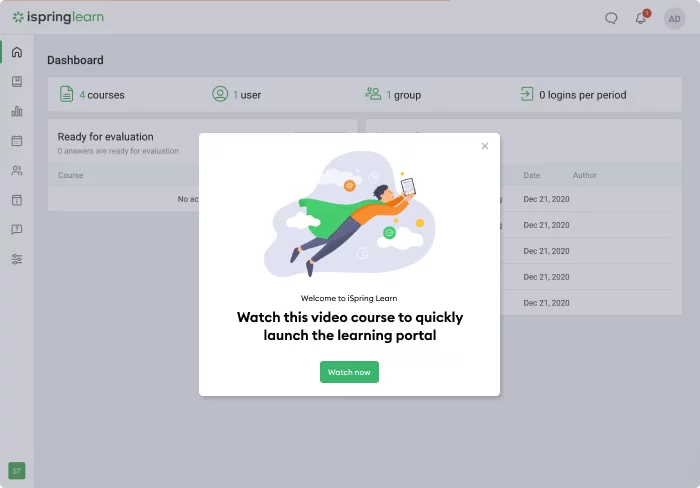
What if your product is complex?
Some companies offer advanced products, like medical equipment or manufacturing machines. Not only are they complicated in terms of usage, but also sometimes require specialized training for different roles in your client’s company. Even if you do your best to make such products user-friendly, they’ll still be too complex to master right away.
In such cases, you have two options to choose from:
- Send a team to provide comprehensive training
- Provide online training to customers
Face-to-face training used to be the only option only a few years ago. However, it’s less and less common nowadays because it is very expensive and limits your competitiveness – which affects the sales process.
You need to have multiple teams, so you can send one to each new client. If you don’t, either your customers will have to be placed on the waiting list for the training, or you’ll have to limit your growth on the market, to allow you to provide all the clients with proper training.
Online training does not present such issues. You only need to create training content once and then simply assign it to your new clients. This is a more flexible and effective way to train clients, and it saves you money. No travel expenses, no reprinting of training manuals, etc. You only need two software solutions:
- A learning management system (LMS) – a platform where you store your courses and training content, assign them to clients or employees, track their progress, and streamline training project management
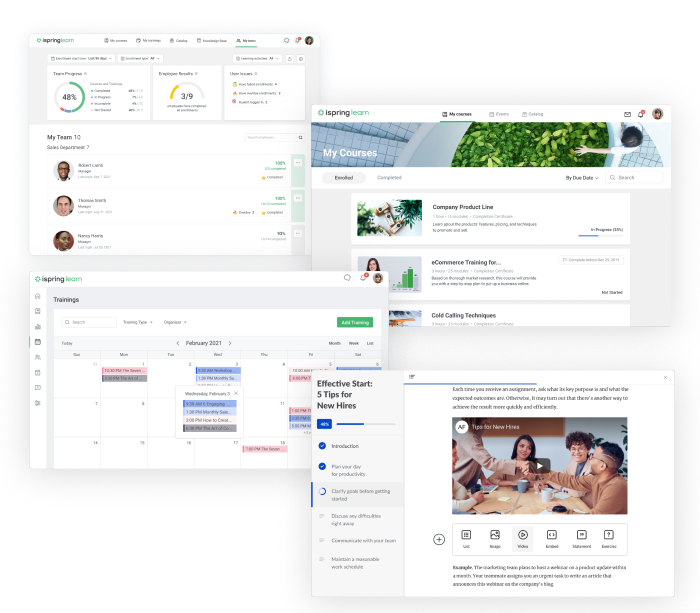
- An authoring tool for creating and updating training content, such as online courses, quizzes, video tutorials, and role-play simulations
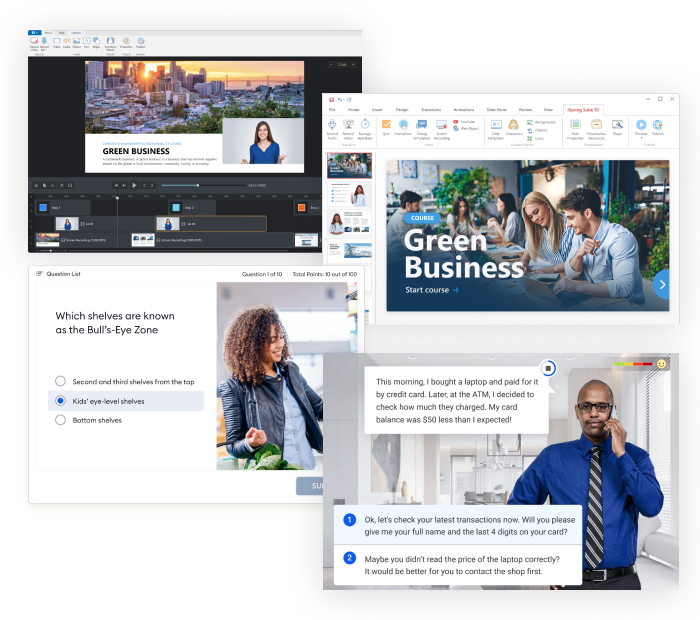
Some software providers offer these tools bundled together. For example, iSpring LMS comes with iSpring Suite, an all-in-one authoring tool, so you have everything you need to launch customer onboarding in the shortest amount of time.
You can also use the same platform to launch employee onboarding in your company and upskill your staff, including the sales team. For example, you can increase your support team KPI with customer service role-playing scenarios.
Check out this case study to see how BEST SAP reduced the amount of time needed to train customers by 2 days with iSpring LMS and iSpring Suite.
Also read: Retail Sales Training – How to Move It Online
Step 4: Assign a point of contact
Assign a dedicated point of contact, such as a customer success manager, to each customer. This individual will serve as a single point of contact for any queries, providing personalized assistance throughout the onboarding journey.
Step 5: Conduct regular check-ins
Follow up with customers at key milestones or predefined intervals to ensure their satisfaction and address any concerns they may have. Seek feedback proactively and offer additional guidance as needed.
Step 6: Gather feedback
Request feedback on the onboarding experience from existing customers and new clients. This feedback can help you identify areas for improvement and refine your training over time. Consider using surveys or feedback loops to collect insights. Feedback will also be useful for presenting the project results to key stakeholders.
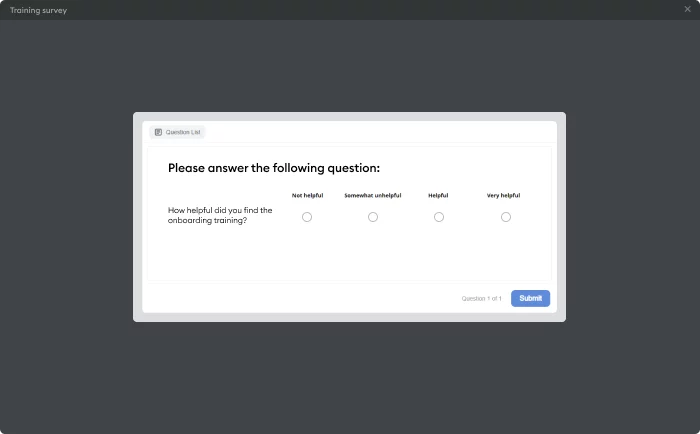
Worldwide Examples of Great Customer Onboarding
Take a look at some examples of customer onboarding success from around the world:
Slack

Slack’s client onboarding process is characterized by its simplicity and intuitiveness. They provide a guided tour of the platform that helps new users understand its features and how to use them effectively.
Dropbox

Dropbox has a comprehensive training program that includes personalized onboarding emails, interactive tutorials, and a demonstration video of the product. This approach ensures that clients grasp the benefits and functionalities of the file-sharing platform from the very start.
Hubspot

Hubspot’s program focuses on empowering clients to achieve their marketing and sales goals. They provide a personalized dashboard for each new user, a step-by-step guide to setting up their account, and access to a dedicated customer success manager.
Airbnb

Airbnb’s training revolves around interactive tutorials that assist both hosts and guests in getting acquainted with the platform. These tutorials cover various topics, including listing properties, making bookings, and managing reservations.
IMT Matcher
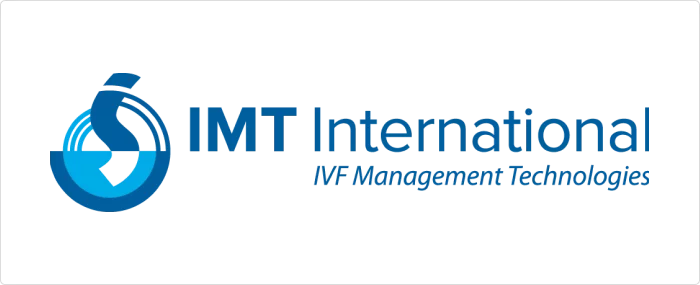
IMT Matcher provides online training for customers and partners around the globe using iSpring LMS. Their training consists of dozens of courses explaining how to use their barcoding software in various scenarios. They have also developed dozens of learning tracks for various groups of learners to maximize training effectiveness by moving training online.
See how they managed to reduce their training costs by 25%.
Canva

Canva’s customer onboarding focuses on empowering users to create professional-looking designs. They provide a series of tutorials that guide users through the platform’s features, allowing them to design visually appealing graphics, even with no prior experience.
These companies have successfully created effective onboarding experiences for their clients. By providing personalized guidance and training, they help users become proficient and derive value from their offerings.
5 Best Practices for Onboarding Customers
To optimize your customer onboarding efforts, consider these best practices:
Practice #1: Understand the customer journey
Gain insights into your customer’s perspective, pain points, and expectations throughout the onboarding process. Align your customer onboarding strategy with their needs to deliver a tailored and engaging customer experience.
Practice #2: Continuously refine and improve
Regularly evaluate your onboarding process and gather feedback from clients. Identify areas for improvement, experiment with new approaches, and iterate to optimize the client onboarding experience.
Practice #3: Leverage automation and technology
Use automation tools and technology, like an LMS, to streamline and scale your onboarding process. Onboarding automation can help deliver personalized messages, track progress, and provide relevant resources efficiently.
Also read: LMS Benefits For Recruiters, HR, Sales and Commercial Directors—Expert Opinion
Practice #4: Foster a culture of customer centricity
Instill a customer-centric mindset throughout your organization. Ensure that all teams understand the importance of onboarding and collaborate to deliver a seamless and consistent customer experience.
Practice #5: Monitor and measure success metrics
Establish key performance indicators (KPIs) to measure the effectiveness of your client onboarding process. Track detailed metrics such as time to first value, user activation rates, and client satisfaction scores to gauge success and identify areas for improvement.
Frequently Asked Questions (FAQ)
Below, you’ll find answers to the most frequently asked questions related to customer onboarding.
How long should a typical customer onboarding process take?
The duration of the entire process varies depending on the complexity of the product. However, it’s generally recommended to aim for a streamlined client onboarding experience that gets clients up and running as quickly as possible. Achieving a balance between thoroughness and efficiency is crucial to avoid overwhelming clients while ensuring they gain benefit from the product early on.
What are some common challenges that businesses face during customer onboarding?
Some common challenges during onboarding include managing client expectations, addressing technical issues such as software integration, delivering personalized experiences, maintaining consistent customer communication, and tracking learner results effectively. Overcoming these challenges requires a well-planned client onboarding strategy, clear communication, and continuous optimization.
What are some best practices for designing an effective customer onboarding program?
Some best practices for designing an effective customer onboarding program include understanding your customer’s needs, personalizing the experience, setting clear expectations, providing comprehensive training, offering responsive customer support, tracking key metrics for continuous improvement, and fostering a customer-centric culture throughout the organization. It is also important to develop and launch training programs in accordance with a customer onboarding template and a client onboarding checklist, so you don’t miss anything.
How can businesses measure the success of their customer onboarding efforts?
The success of a company’s customer onboarding program can be measured by tracking key metrics, such as time to first time value, user activation rates, client satisfaction scores, retention rates, and upsell or cross-sell opportunities. Gathering feedback through surveys or feedback loops and analyzing data from customer interactions can provide insights into the effectiveness of the client onboarding process. There are many helpful customer onboarding templates that will help you measure the success of your training efforts.
How can businesses ensure that their onboarding program remains relevant and engaging for customers over time?
To ensure that the client onboarding program remains relevant and engaging, businesses should regularly evaluate and update even good onboarding process based on customer feedback, evolving needs, and market trends. They should proactively seek customer input, stay updated on industry best practices, and leverage technology and automation to deliver personalized and engaging experiences at scale. Updating your customer onboarding template is also essential.
How can businesses balance the need for thorough onboarding with the desire to get customers up and running quickly?
Striking a balance between thoroughness and efficiency in client training requires a strategic approach in project management. Businesses can prioritize essential features and functionalities during the initial phase while providing additional guidance for more in-depth exploration as clients progress. Regular check-ins, responsive customer support, and ongoing communication help address questions or concerns. It would also be useful to create your own customer onboarding template, since it would help you accelerate your workflow.
What resources are available for businesses looking to improve their customer onboarding efforts?
Businesses that want to improve their client onboarding efforts can explore various resources, such as online guides, customer onboarding templates, industry publications, case studies, webinars, and conferences. Some platforms offer a client onboarding template and a customer onboarding checklist. Additionally, engaging with customer success communities and seeking out professional consulting or training can provide valuable insights and strategies for designing a good customer onboarding process. Contact our experts to get personalized advice on launching your customer training with iSpring LMS.
Conclusion
A well-executed customer onboarding process is a key driver of customer satisfaction, loyalty, and long-term success. By understanding the importance of customer onboarding, implementing best practices, and drawing inspiration from successful examples worldwide, businesses can establish strong relationships with their new customers and ensure a smooth and engaging onboarding journey.
Discover how you can launch effective customer onboarding with iSpring LMS. Book a personalized demo, so we can delve into your case and show how our training platform will help.



